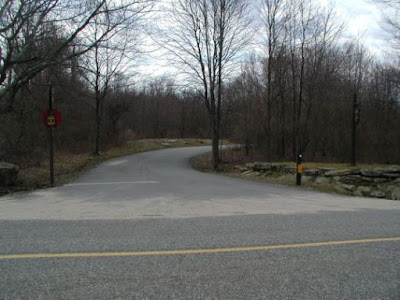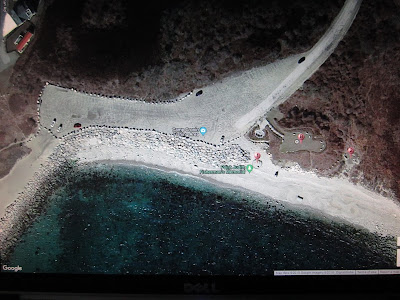So, here's what I use, and it won't cost a whole lot to make.
Whether I'm fishing saltwater with tidal currents, or freshwater with windy conditions, there are some instances where I just want to stay put in one spot. I currently use a 5 lb. grappling-style anchor and a package of 550 Paracord 50 ft long. But, rather than keep the paracord in my lap, I use a unique retrieval system that I bolted onto the side of my gear crate.
This is my gear crate. After a 2 year absence, I plan to re-install my anchor line retrieval system in the same spot as where the old one was. It seems to work well there. You may want to put your crate on your kayak to see where you want to install it.
Photo Credit #1: Jeff Hall
This is a retractable clothesline unit that I got at Home Depot for about $30. There are two kinds - one is rated at 20 ft long, and this one, which is rated for 40 ft long. I chose the longer 40 ft one because I will be attaching about 50 ft of 550 Paracord to the existing line. The paracord is incredibly strong and really doesn't take up a whole lot of space inside the wheel. You won't need the hardware.
Photo Credit #2: Jeff Hall
The reel already comes with vinyl coated line - which takes a lot of room inside the reel. I pulled out 39 ft of cord and wrapped the cord on the cleat to hold it in place. I then held both the vinyl cord and paracord at the same time and just tied a simple knot. I cut the excess cord on both pieces and left about quarter inch from the knot.
Photo Credit #3: Jeff Hall
I lit ends of both cords. When the flame it got near the knot, I blew out the flame and used the flat end of a screwdriver to flatten the ends of the cord. This is crucial to help keep your cord from untying itself. The flattened ends will prevent the cords from slipping through the knot. Trust me, it works really well, and I've never had a problem since.
Photo Credit #4: Jeff Hall
Here's a close up of the flared cord ends. Even if the ends melt together, this is even better as it will make it impossible for the knot to unravel itself.
Photo Credit #5: Jeff Hall
If the plate looks like it's upside down, it is. The reel has its own cleat built in UNDER the reel. For my tastes, I prefer to have the cleat on the TOP. I used 4 stainless steel screws and 4 stainless steel locking nuts.
Photo Credit #6: Jeff Hall
To keep the reel firmly in one place, I used a piece of scrap aluminum plate from an old road sign. The road sign was purchased at a local flea market for $10. I started with two bolts in the existing bracket on the reel and secured them in place. Then, I drilled from the inside of the crate on the other two holes that were used on my last crate and secured those other two bolts.
Photo Credit #7: Jeff Hall
I stopped at a local ACE Hardware/True Value store and found this brass clip. Brass is extremely durable and great for saltwater use. *Pro Tip - Can't find a brass clip at your local hardware store, a marina shop might have something similar, or anyplace that services sailboats.
Just be sure to keep the clip sprayed with WD-40 so the spring & clasp doesn't get corroded.
*NOTE: Depending on your anchor choice, you may want to bring your anchor with you when choosing the right clasp. The clasp should be able to move freely when attached to the anchor.
Photo Credit #8: Jeff Hall
My friend Mo shows how the anchor line retrieval system is used in conjunction with a anchor trolley. On her crate, the reel is near the front of her crate. This is due to the fact that she has a shorter arm reach than I do. I have longer arms, so I chose to put my reel near the back of the crate.
Photo Credit #9: Jeff Hall
You don't have to use the cleat on the top of the reel housing if you already have a cleat on your kayak. This works out great for her. When you're done with the anchor, you pull it up, disconnect it from the line, and the spring inside the reel automatically retracts the line for you.
Photo Credit #10: Jeff Hall
So, there you have it. My "not-so-secret" anchor line retrieval system that I've been using for about 5 years now. When I rolled a few years ago in the saltwater, the salt damaged the reel spring inside. I bought another 40 ft clothesline reel and repeated the same process as above. A small price to pay for an inexpensive system that works well. It has saved my hide a few times from getting caught up in strong currents going out a breachway. The line is super strong and extremely durable and holds up well. You shouldn't have any problems in freshwater either.
Until then, keep those lines wet & tight! - J





































































